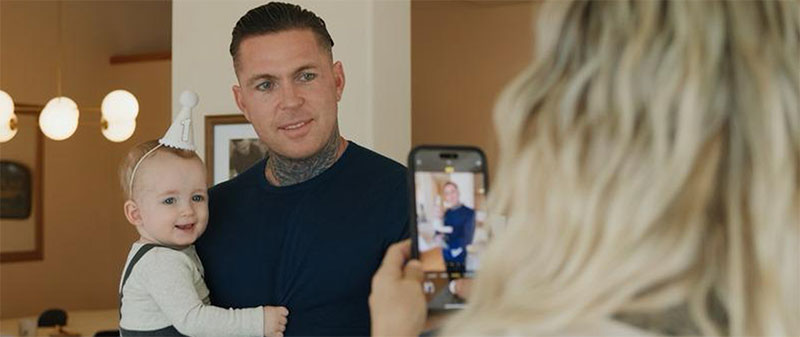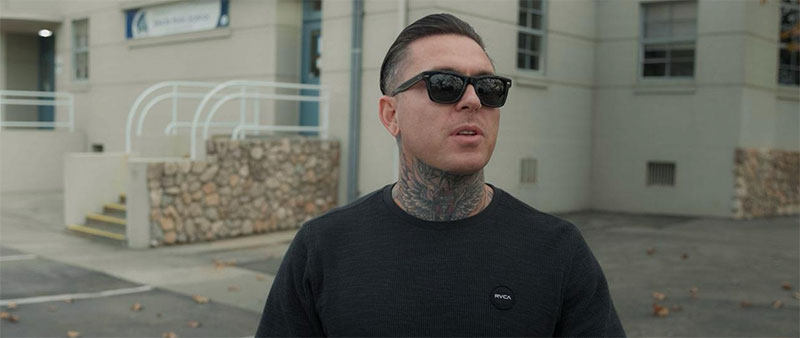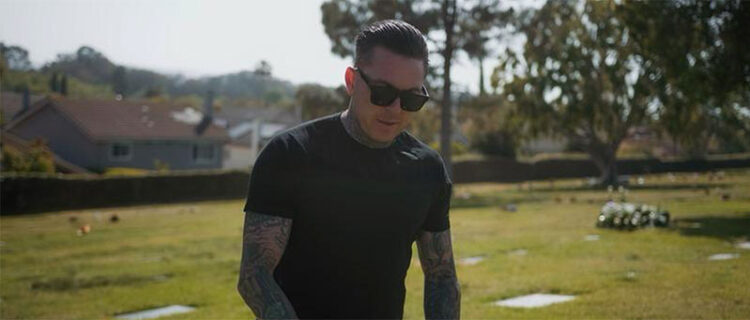When a film dares to confront the darkest corners of addiction while keeping faith at its center, it becomes more than a documentary—it becomes a call to transformation. The Threshing Floor, directed by Brad Alexander and produced by Wise Old Crow Media, tells the story of motivational speaker Tim Arrigo’s journey through addiction, brokenness, and ultimately, redemption. Stonecutter Media released the film in North America on September 9, 2025, through a wide slate of major digital, cable, and satellite platforms, including Amazon, iTunes, Google Play, Sling TV, Comcast, DirecTV, Verizon Fios, and many more.
For Arrigo, the documentary was born from an awakening that his pain had purpose. “The turning point came when I realized why I was so effective in the clinical setting. It wasn’t just my education or licensure—it was my scars. Clients could see I wasn’t speaking from a textbook; I was speaking from the trenches. The same pain that nearly destroyed me became the exact reason men opened up, trusted me, and finally let someone in. Over time, I began to understand that my story had power—not because it was dramatic, but because it was real. That realization is what led to The Threshing Floor,” Arrigo reflects.
The process of making the film came with painful sacrifices. “It was losing friends along the way—men I loved, counseled, prayed with, and believed would make it. Some of them are gone—overdoses, suicides, relapses that ended in silence. Feeling that grief while filming… that was the heaviest weight. There were moments during filming when I’d stop mid-sentence, because their faces would flash through my mind. It wasn’t just my story I was telling—it was theirs too. The ones who didn’t get the ending I did. And that hurts me, but it also inspired me at the same time. I kept going because I had to honor them. If this film reaches one person on the edge, then we did our job.”

The documentary insists on dismantling old definitions of masculinity that fuel cycles of silence and shame. Arrigo put it bluntly: “Men aren’t dying because they’re weak—they’re dying because they’ve been taught to hide. To perform. To never let anyone see them bleed. The film dismantles that lie. The Threshing Floor shows that vulnerability isn’t the end of masculinity—it’s the beginning of transformation. It reframes purpose as something that doesn’t come from proving yourself, but from finally facing yourself. My aim is to give men permission to stop pretending and start healing—to show that walking through the fire doesn’t make you damaged, it makes you dangerous to the darkness.”
For director Brad Alexander, the story was deeply personal. He and Tim grew up in Orange County, witnessing firsthand how addiction devastated their community. “I think a big piece of our connection was that Tim and I had known each other as kids, so I saw firsthand some of his story when it was unfolding. I wasn’t so far removed from it, and there’s a lot of commonality in his story, especially with where we grew up in Orange County. We’ve both lost a lot of friends to the drug epidemic, too. What was very different, though, was the way Tim talked about recovery, and that drew me in when we reconnected. I felt like there was a story bigger than us that had a fighting chance to change the conversation at large, and that was worth going after.”
One of the most powerful anecdotes in the film came when Alexander met the family of Kevin, a young man who died of an overdose. “When I met Kevin’s family, it clicked that while Tim is still here, a lot of people have lost their lives to substance abuse. We wanted to give a face to it, so we shared Kevin’s story through his family, and it’s one of the most emotional sequences in the film. I still talk to Kevin’s mom to this day; she checks in to see how my wife and kids are doing, and can’t imagine the film without her.”
Producer Reed Stoecker emphasized the vulnerability required to tell this story. “Opening up those memory catalogues, getting vulnerable, and retelling stories of a life that has passed takes guts and a passionate leader like Brad who is willing to bear it all for the sake of delivering hope to others.”

But at its core, the message of The Threshing Floor is spiritual. “Without faith, there is no Threshing Floor,” Arrigo said. “This isn’t just a recovery story—it’s a resurrection story. Every frame of this film is rooted in the belief that true transformation doesn’t come from willpower alone—it comes from surrender. From God stepping into the ashes and doing what human effort couldn’t.”
Arrigo hopes that the release of the film will help reshape conversations around addiction and recovery in a society still bound by stigma. “Addiction isn’t just a chemical issue—it’s a soul issue. People don’t end up in dark places because they’re weak—they end up there because they’re wounded. This film reframes recovery as a spiritual awakening, not a clinical diagnosis. We want society to see resilience not as bouncing back, but as rising up—scarred, yes, but stronger. And we want every person watching to walk away knowing: you’re never too far gone. There’s still purpose in your pain. And you were never fighting alone.”
As the documentary premiered digitally in early September, audiences now have a chance to encounter not just a film but an invitation—to face their own wounds, to find strength in vulnerability, and to believe that faith can transform you.













